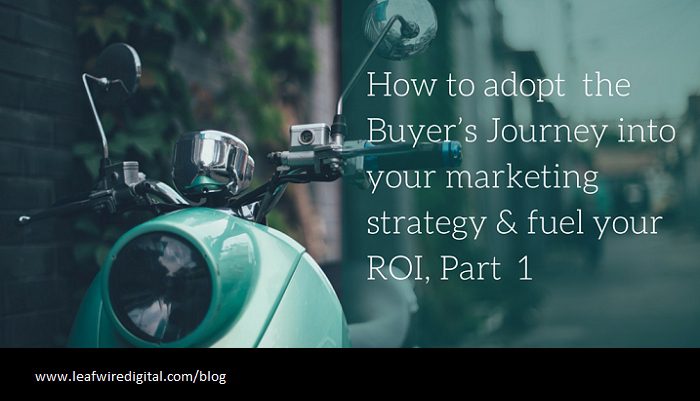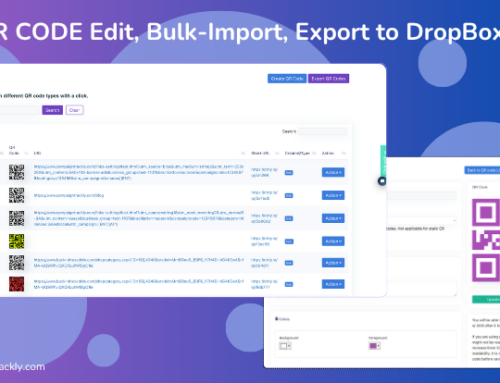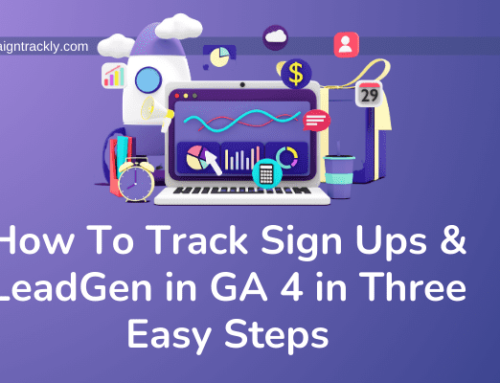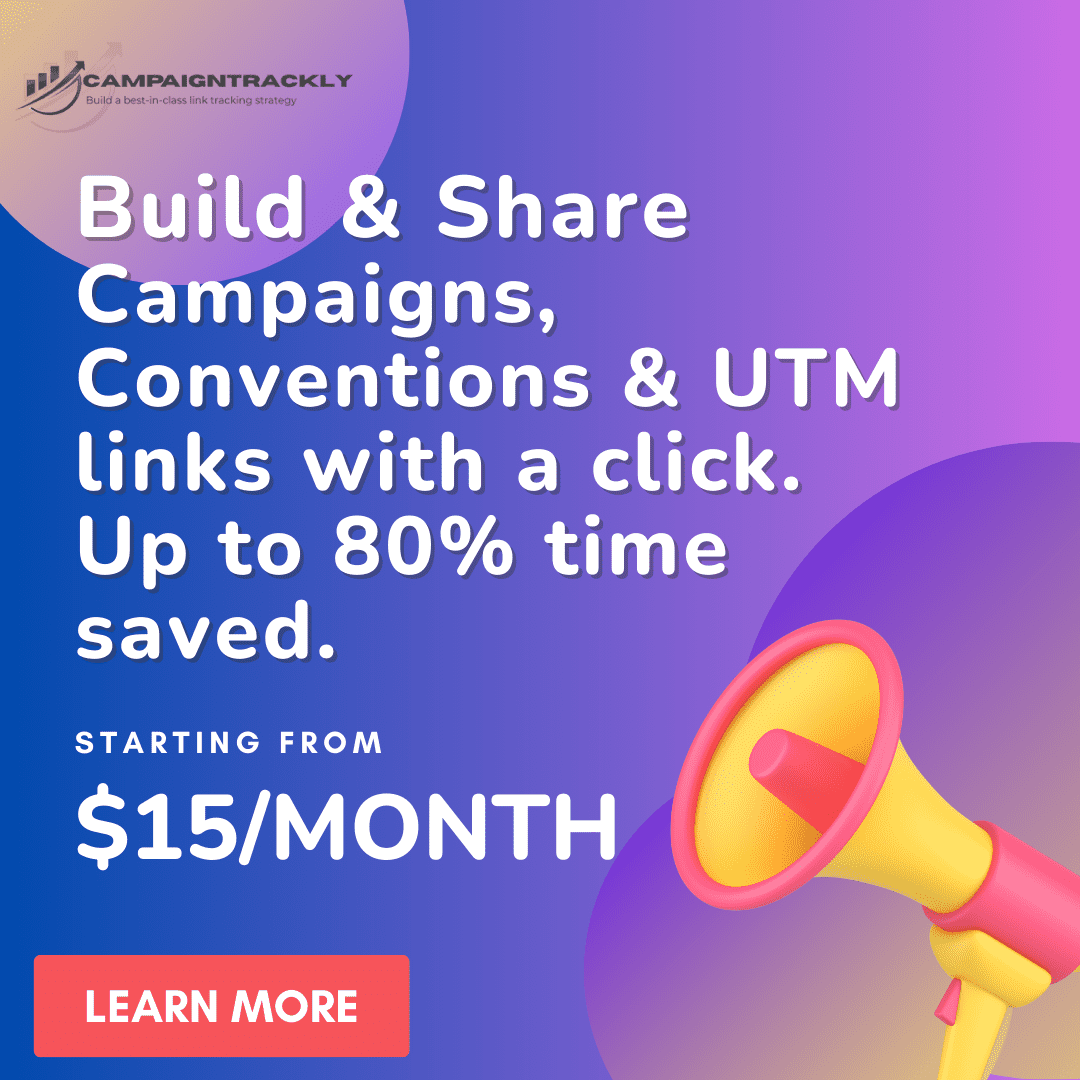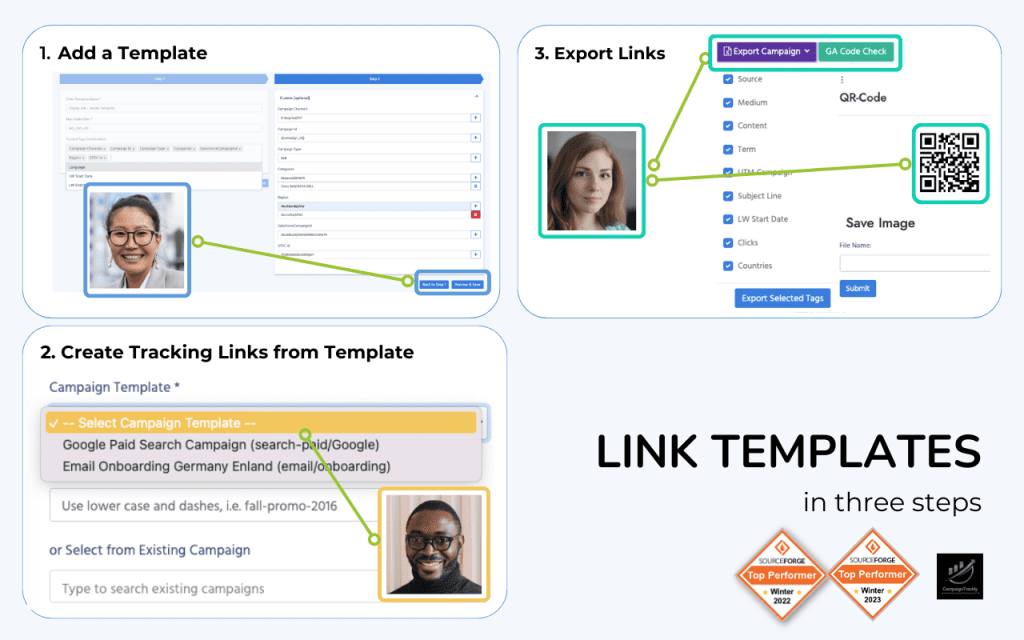Why planning your marketing efforts with the buyers’ journey in mind generates results, as confirmed by CRM leader Salesforce.com
Salesforce.com recently published the results of their 2016 State of Marketing survey, and one of their key findings is that marketers who have identified and embraced the buyer’s journey, and planned their initiatives around it have seen great marketing ROI. 73% of the respondents surveyed in the study have stated that by adopting the customer journeys into their strategies & tactics, they were able to see positive ROI on their marketing investments across their mobile, social, email, and web channels, despite the increasingly noisy marketplace.
Not all marketers are doing this, though. Often the reason is that it is hard to find a tried and tested way to implement it successfully without spending a good deal of time and resources, which, let’s be fair, very few of us are lucky enough to have.
How to successfully adopt the customer journey into your Marketing Strategies & Plans
I would like to share with you one way of defining and integrating your buyer’s journey into your marketing efforts that can be quite successful without being too taxing, time-and resource-wise. This approach not only enabled me and the team I was working with to deliver excellent results for a newly launched product. It also empowered us to shrink our sales cycle significantly. Additionally, we learned a great deal about our customers and secured a well-sized budget to support our promotional efforts.
A cross-functional setup approach is a must for this process, and while it could be challenging, the wins outweigh the costs
I will start by letting you in on a little secret – deciding how to approach and define your buyer’s journey can be a tad challenging because often it requires that we involve a lot more people than those within our immediate team. As Lead-gen marketers, we need to team up with product management, inside sales, and after-sales services to make sure we can map our target audiences correctly and implement their journeys effectively. Although we all want the same thing – more sales – each group covers a different phase of the buyer’s journey. This means that the ways we interact with customers, as well as our immediate objectives and opinions about the nature of the journey are probably quite different.
How to collaborate successfully
To succeed in this collaboration, we have to ensure that everyone’s goals are aligned, and we all know who does what and when, and ultimately what the end game is. For example:
- Product management wants to make sure they are off to a positive start in building a pipeline for their product and creating a foundation for increased market growth. For starters the immediate goal is that:
- Inside sales hit ten orders by the end of the first three months after the launch.
- Lead-gen team provide all the leads needed (and these are obviously significantly more than 10 – here is a great little resource that shows how to calculate the number of leads you need to hit specific sales targets))
- The service team make sure that customers are on-boarded & supported successfully.
Once the game plan has been agreed, then the actual process of mapping, identifying, planning, and implementing everything becomes quite straightforward.
Working within a cross-functional team is quite rewarding. You get to identify potential stumbling blocks early in the process, and that helps clarify key components and even generate great ideas that ultimately enable everyone to do a good job and generate more sales.
Step 1 – Identify WHO your Buyer is and apply the basic Buyer’s Journey matrix
This is the stage where the Lead-gen team works with product marketing to agree on the priority target audiences and the drivers behind their decisions during the first three stages of the buying journey: awareness, consideration, and decision making.
Just to make sure we are all on the same page, Lead-gen marketers follow this simple journey construct that consists of 4 basic steps (we will only be focusing on the first three here):
1. Awareness > 2. Consideration > 3. Decision > 4. Retention
Awareness
Awareness is the phase where let’s say a business has decided that they have grown a large database of customers, and they now need to start leveraging this database to increase their repeat business by sending emails or newsletters. Then they start looking for information that would help them learn more about emailing, email marketing, how it’s done, what is required to do it, etc.
Consideration
Consideration is the phase where the business has learned that to manage their contacts online and increase their repeat business, they need to start emailing customers at least a couple of times a week. To do that successfully, they need an email software that will help them automate a lot of things like segmentation, opt-ins, opt-outs, email templating, list management, etc. So they are now trying to understand what email solutions are out there, and which ones might be the best fit for them. They will probably learn that there are various email marketing solutions, as well as marketing automation solutions and CRM solutions. Now, they need to understand what each solution group offers and which offering is closest to what they need.
Decision
Decision is the phase where a decision is made to go with an email marketing solution vs. the rest of the solution groups out there, a short list of potential vendors has been built, and now the company is in the process of evaluating vendors and trying to decide which solution is going to offer the best pricing, features and total cost of ownership..
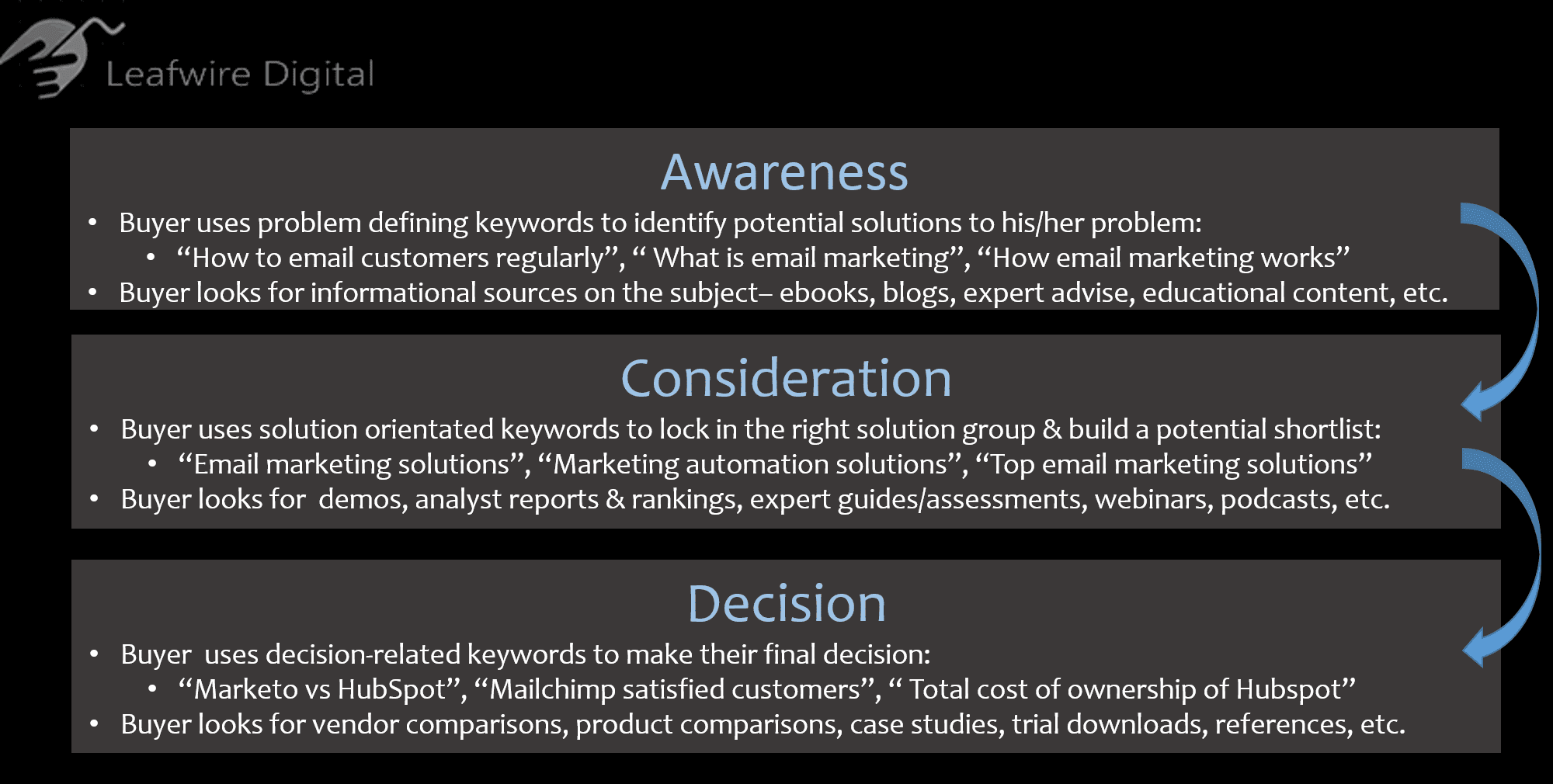
In the case of our project, the product group had six target audiences, but only 1 was a priority at that point in time. We knew that all of the target audiences would want our product, but for different reasons. Ideally, we would have had to build different journeys with customized content that addresses specifically the needs of each one of them, but we lacked the resources to do that. So we decided to focus on our priority segment.
We decided to build three different routes that would match each of the three buying journey stages to make sure we are covering all our prospective buyers – newbies, people who are looking to evaluate solutions similar to ours, and users who are ready to buy.
Adopting the buyer’s journey into our campaign construct
- For those who were just starting to look for a way to identify their problem (awareness stage), we prepared a blog that would lead to a dedicated informational landing page. The page linked to a lot of resources, including a white paper and newsletter opt-in. The plan was that once the user downloads the white paper and subscribes to the newsletter, once a month, they would receive specific product-related content, meant to move them to the next buying stage.
- Those in the more advanced stages (consideration), who were actively looking for a solution to meet their needs, were offered a free evaluation download. A well-defined nurturing program was planned, using our marketing automation software, Marketo.
- For the prospects who were ready to buy (decision), we prepared a separate “Contact me†landing page that would push the leads from Marketo into our CRM tool, alerting our Inside Sales team to get in touch with them.
Once Step 1 was covered, it was time to focus on Step 2. I will be covering this phase in part 2 of this series. In the meantime, please let me know if you have any questions or comments – happy to chat.

